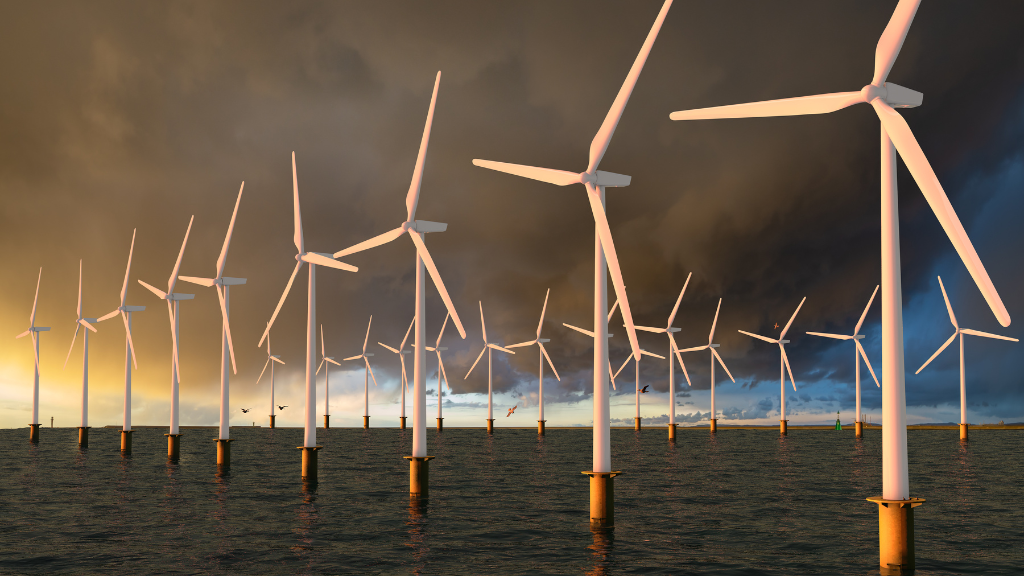The offshore wind industry is rapidly advancing, playing an important role in our quest for a more sustainable future. In 2022 alone, the sector saw an addition of 8.8GW of new capacity, increasing the total to 64.3GW – a significant rise from just 5.4GW in 2012[1]. The Global Wind Energy Council projects an impressive 380GW of new offshore wind capacity by 2032, with the Asia Pacific region expected to lead nearly half of this growth[2]. This expansion is important for adhering to the Paris Agreement’s goal of limiting global warming to 1.5°C and striving for net-zero emissions by 2050[3].
The UK, leveraging its offshore engineering expertise, is a global leader in offshore wind capacity. However, the journey to harness sea winds – to meet the UK government’s goal for offshore wind to power every home by 2030 – is filled with technical challenges[4].
Navigating Ocean Environmental Challenges
Offshore wind energy development demands an in-depth understanding of the ocean’s challenges. The interaction of winds, waves, and turbines requires robust atmospheric wind energy models, enhanced data assimilation methods, and extensive field studies. This comprehensive approach is crucial for validating models and meeting goals like the Biden administration’s aim of producing 30 gigawatts of offshore wind energy by 2030[5].
Overcoming Geophysical and Material Challenges
The installation of offshore turbines faces obstacles like deep submarine trenches and massive boulders. Technologies such as sonar and seismic reflection surveying are vital in mapping these challenges. Also, turbines and foundations must combat corrosion, fatigue, erosion, and biofouling. Innovations in materials and manufacturing, alongside strategies to combat corrosion, are key for maintaining operational integrity.
Addressing Transmission and Supply Chain Issues
The increasing global demand for offshore wind power strains the supply chain, particularly for components like submarine cables. About 75% of offshore wind insurance claims are linked to cable issues, highlighting the importance of strategies like detailed geophysical surveying, early supplier engagement, and robust repair plans. These are essential for ensuring efficient, uninterrupted power transmission and reduced repair costs[6].
The Future of Offshore Wind Farms
Despite these obstacles, the future of offshore wind energy is bright, marked by innovations such as floating turbine technologies and advancements in cable designs. These developments are gradually overcoming cost and logistical barriers, improving the sector’s potential.
As we progress, the significance of overcoming these challenges goes beyond engineering – it’s a critical step towards a sustainable future. Offshore wind farms symbolise a shift towards renewable energy, with the potential to power millions of homes and significantly reduce carbon emissions. The path may be complex, but the rewards of a cleaner, greener planet are undoubtedly worth the effort.
Footnotes
- https://commercial.allianz.com/news-and-insights/reports/offshore-wind-opportunities-risks.html
- https://gwec.net/gwecs-global-offshore-wind-report-2023/
- https://www.irena.org/News/articles/2022/Jun/Blue-Economy-Can-Help-Members-Boost-Offshore-Renewables
- https://www.ukri.org/news-and-events/responding-to-climate-change/topical-stories/harnessing-offshore-wind/
- https://eos.org/features/ocean-terrain-and-the-engineering-challenges-for-offshore-wind-farms
- https://www.stantec.com/en/ideas/4-challenges-to-overcome-when-transmitting-offshore-wind-power


